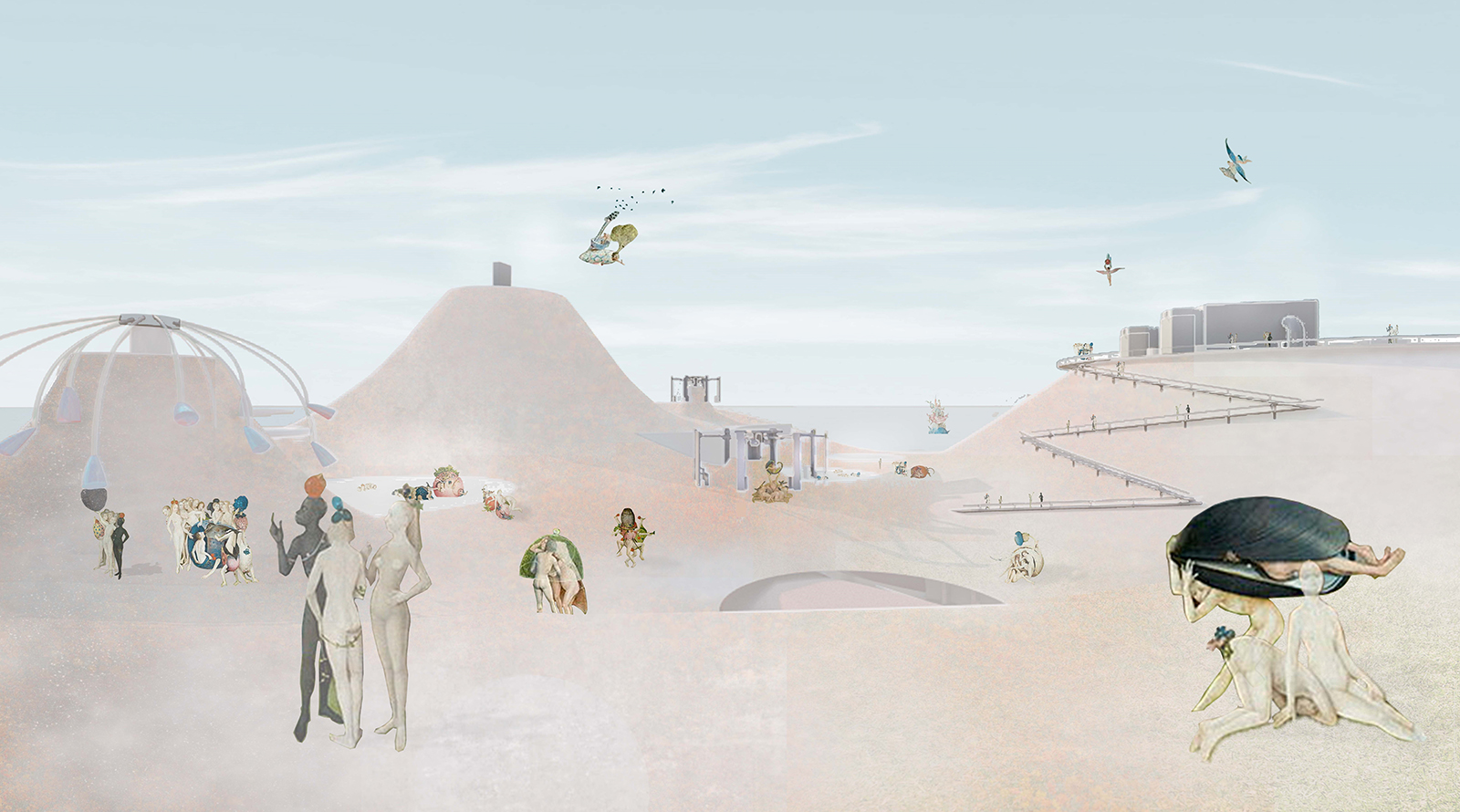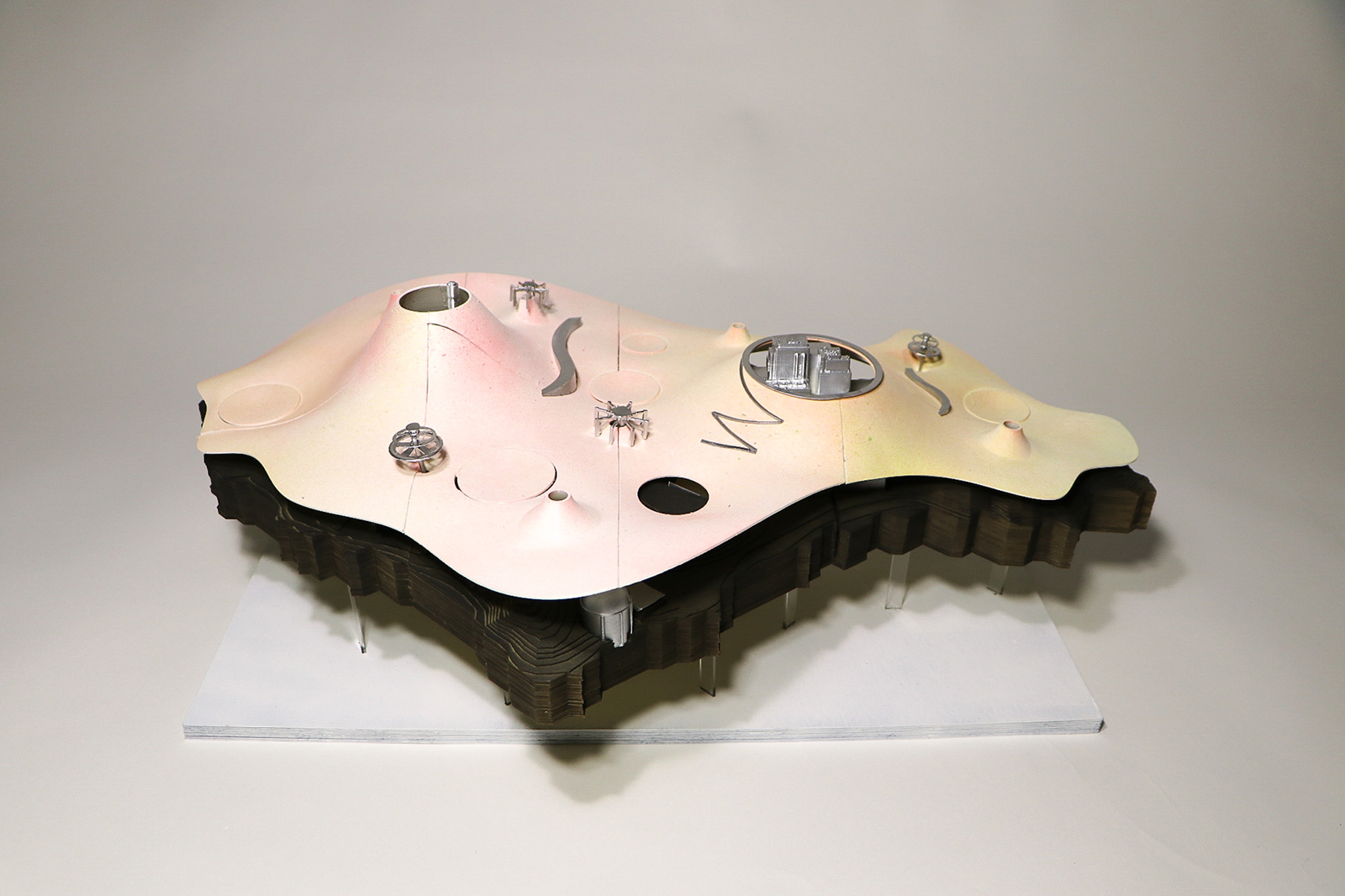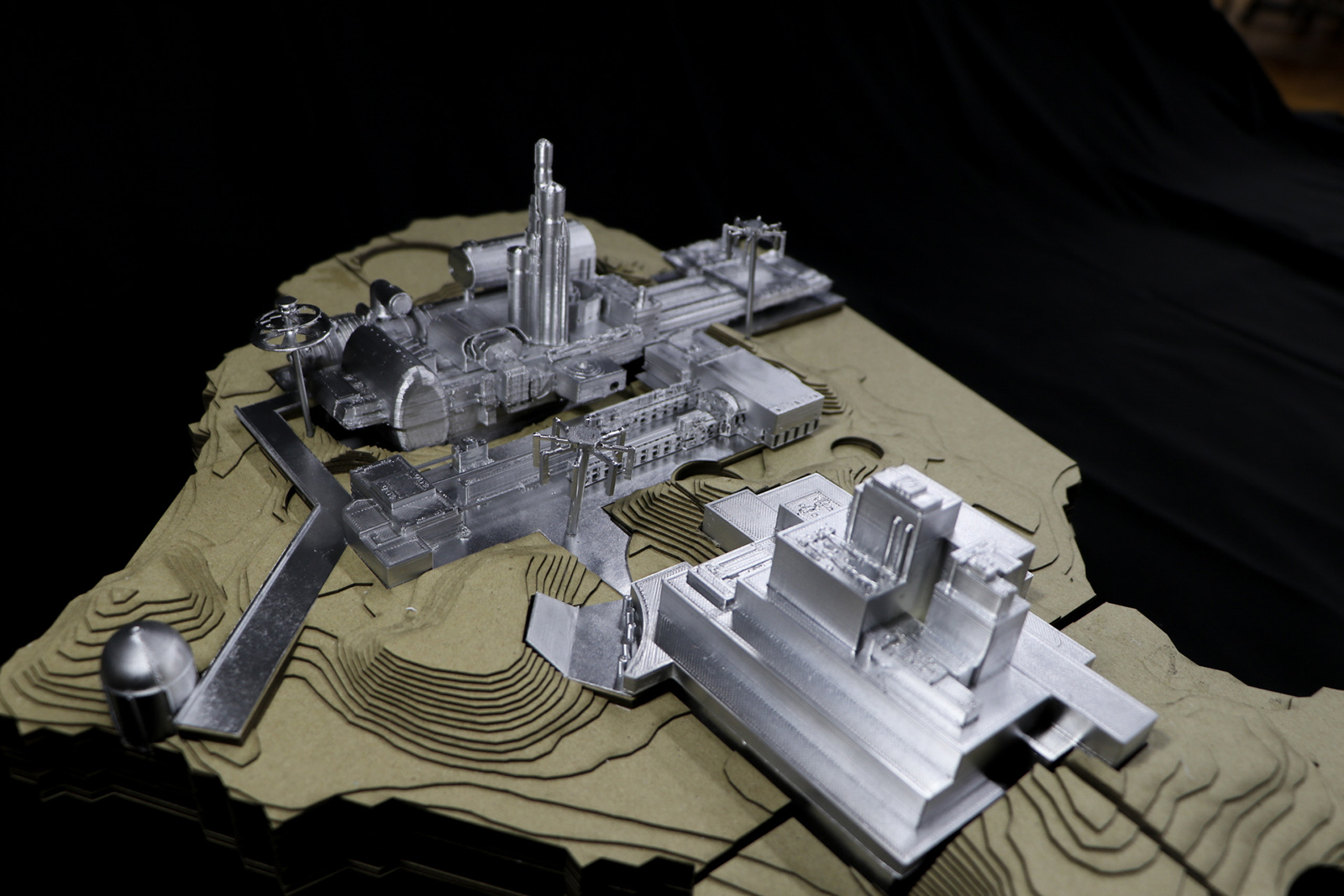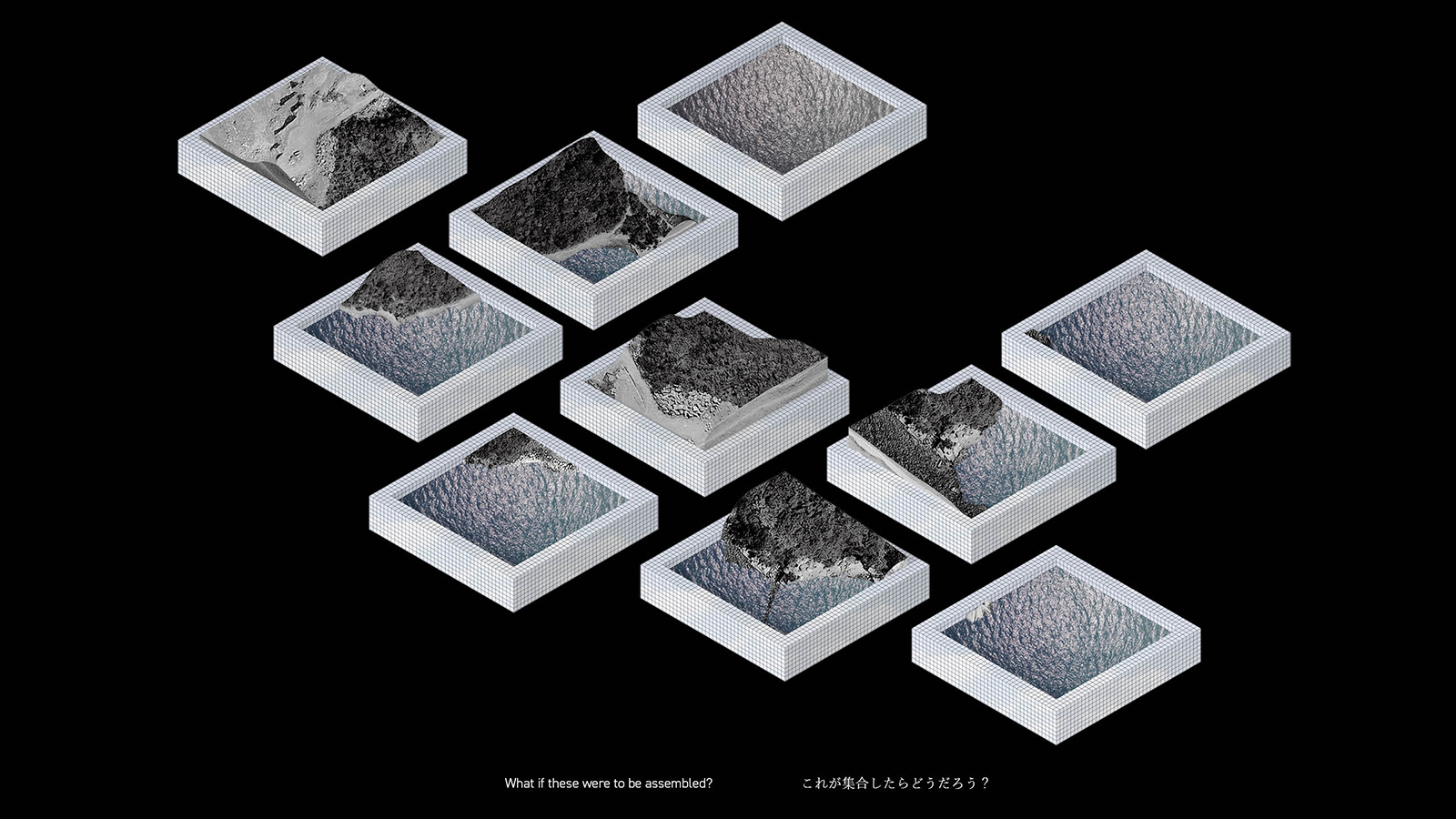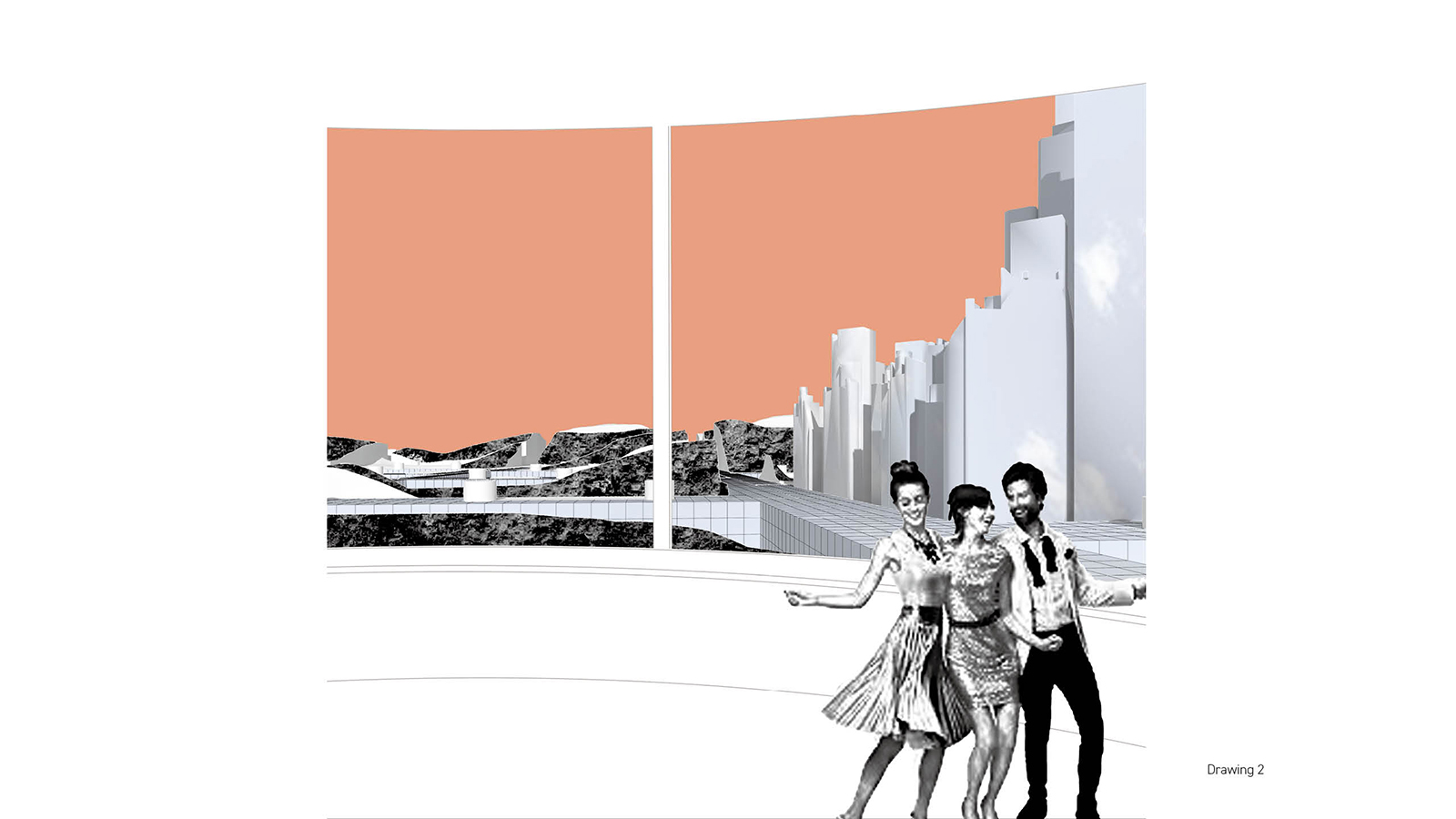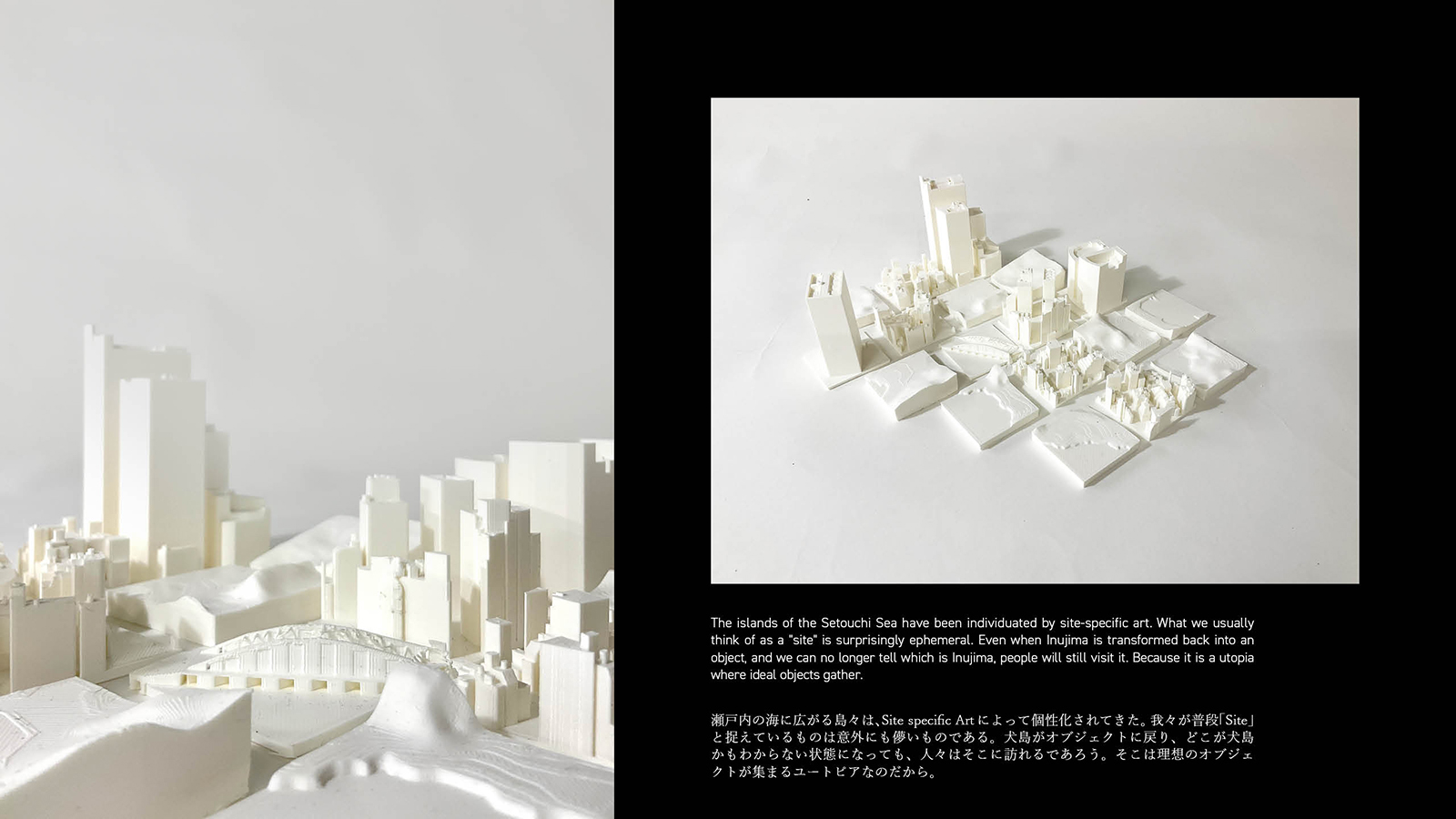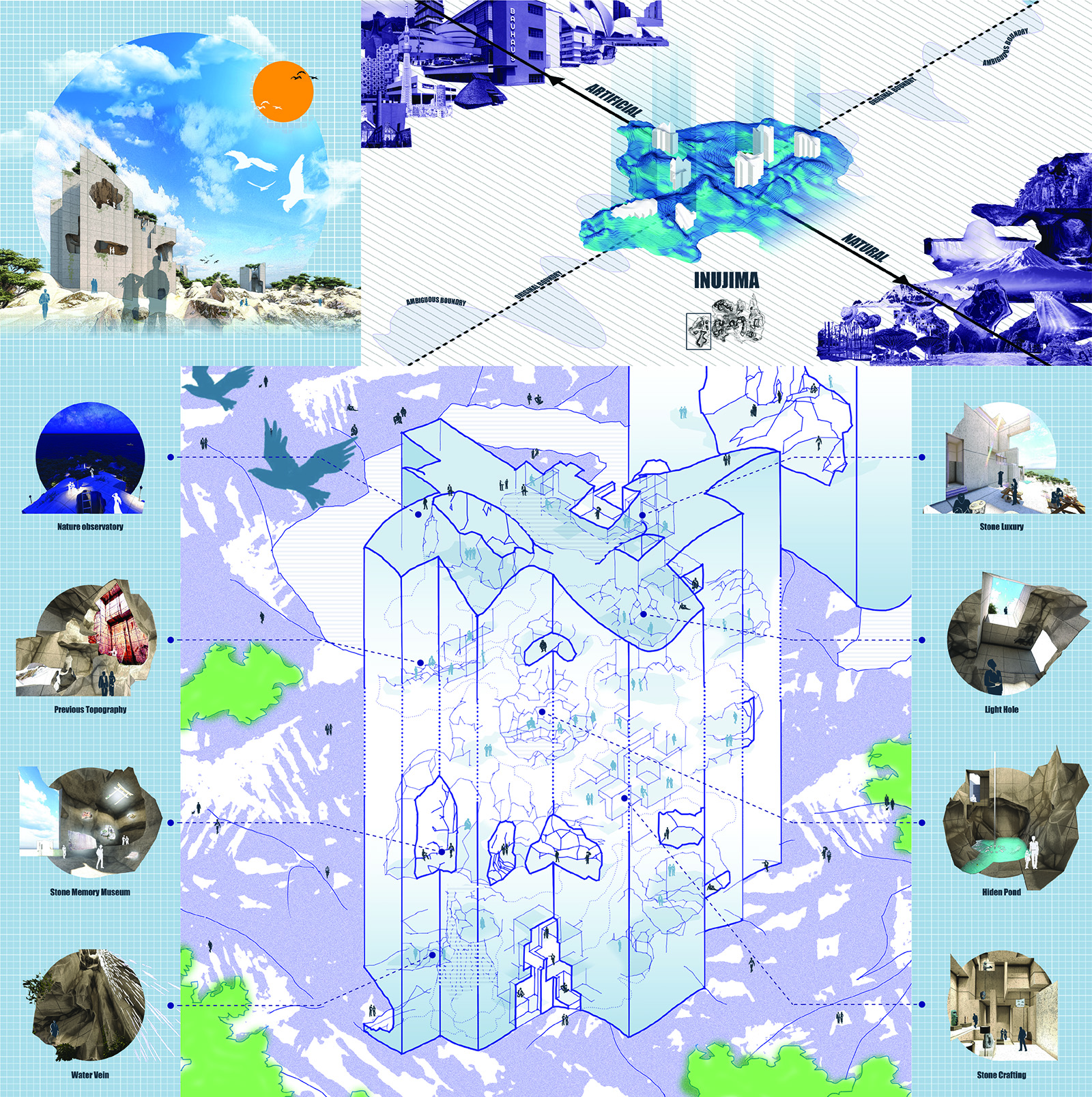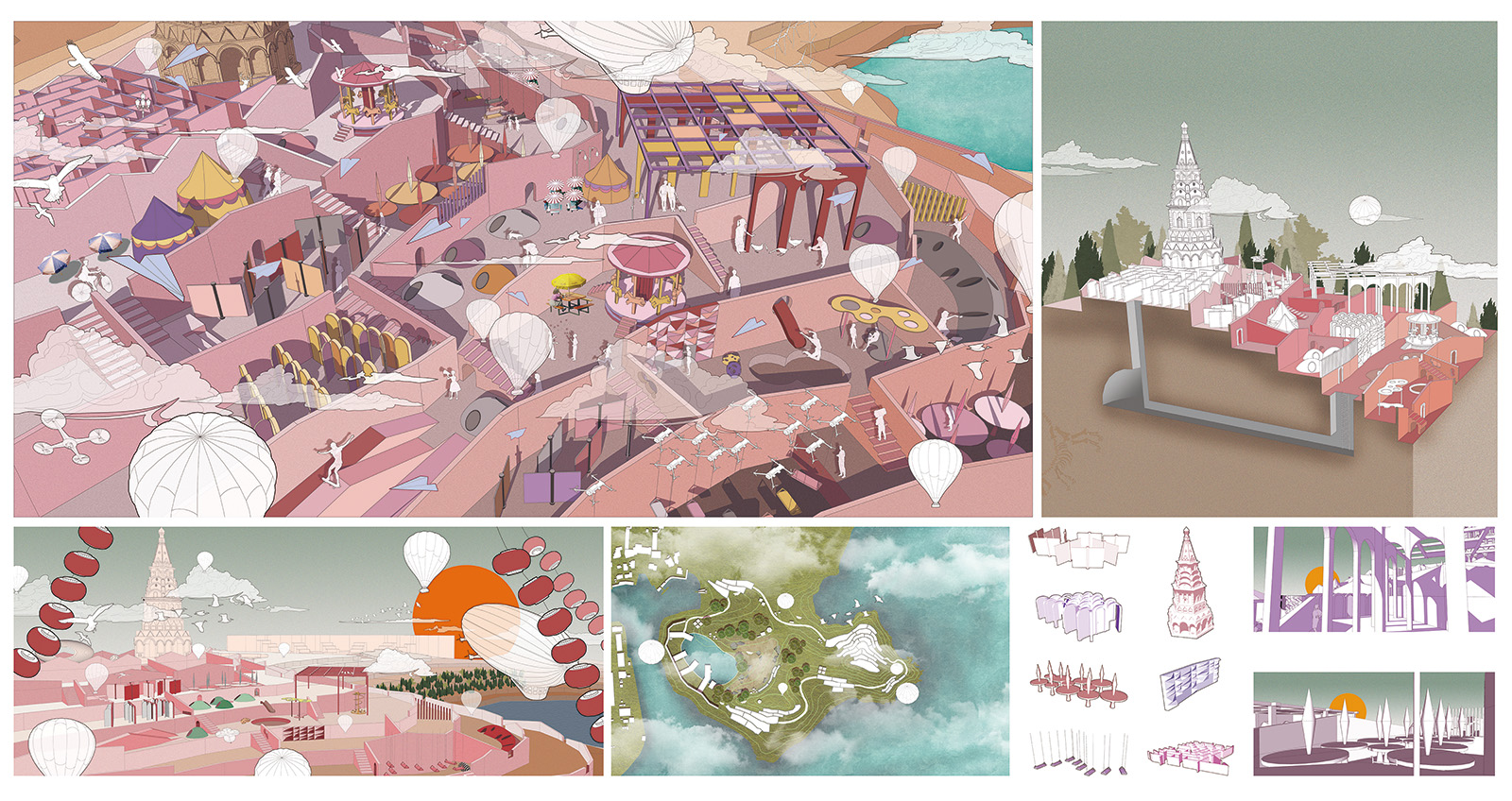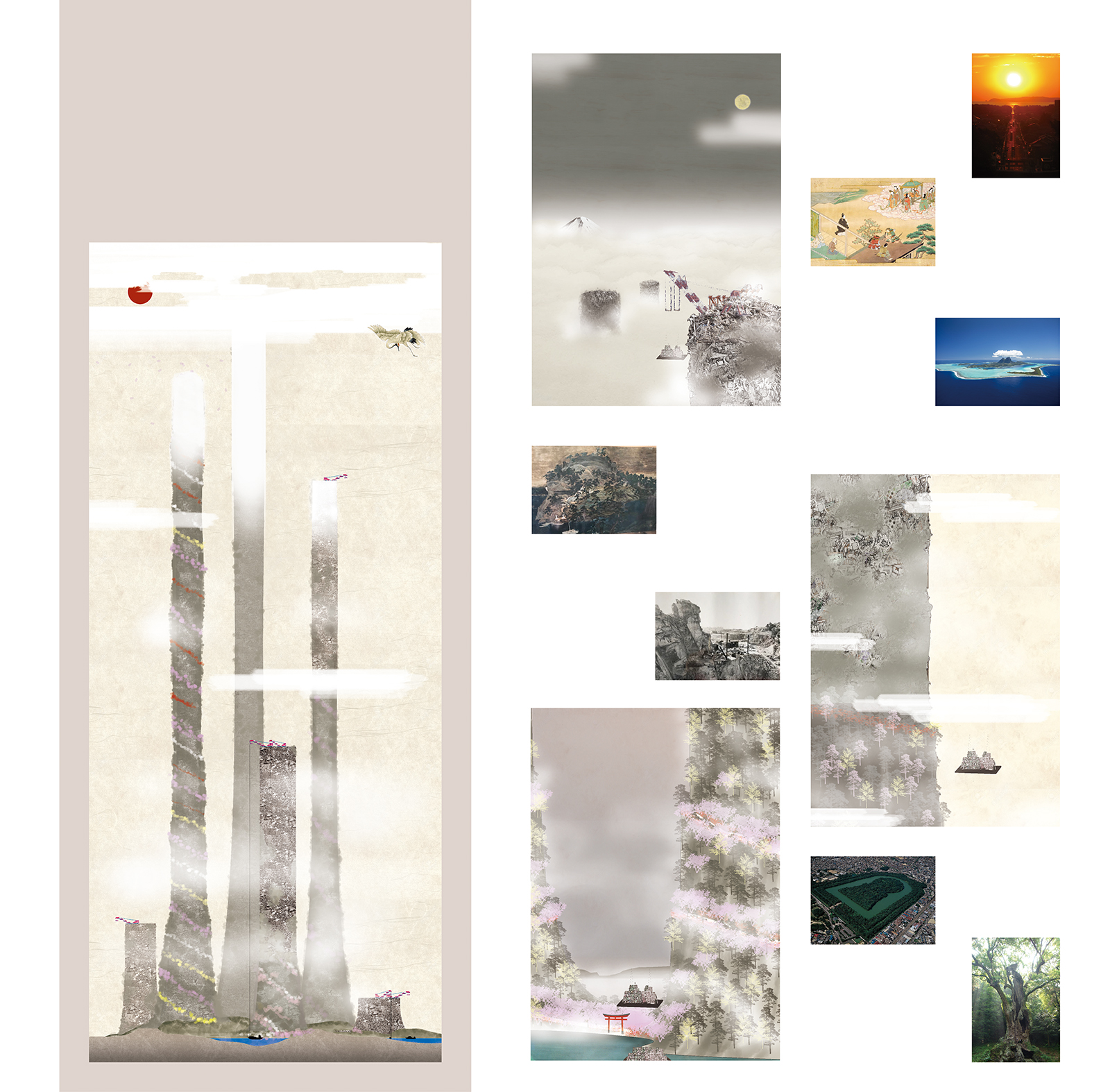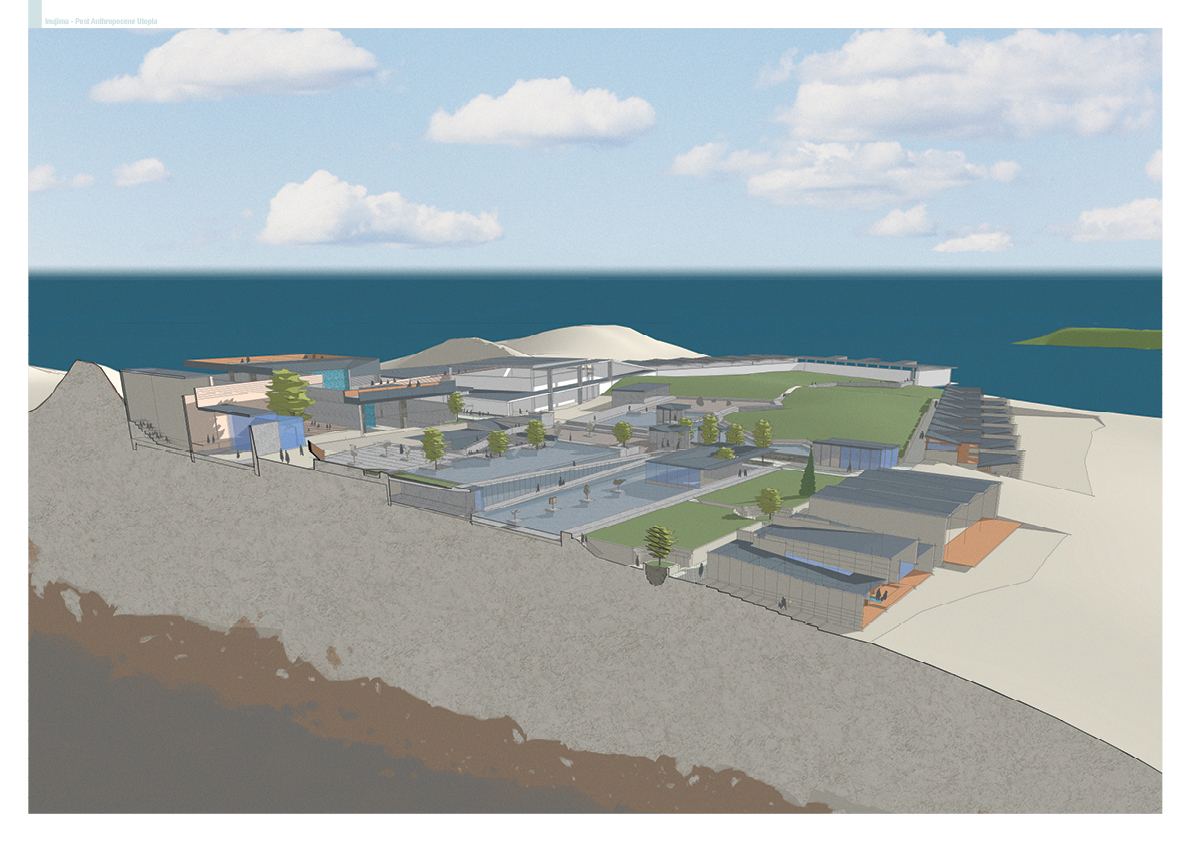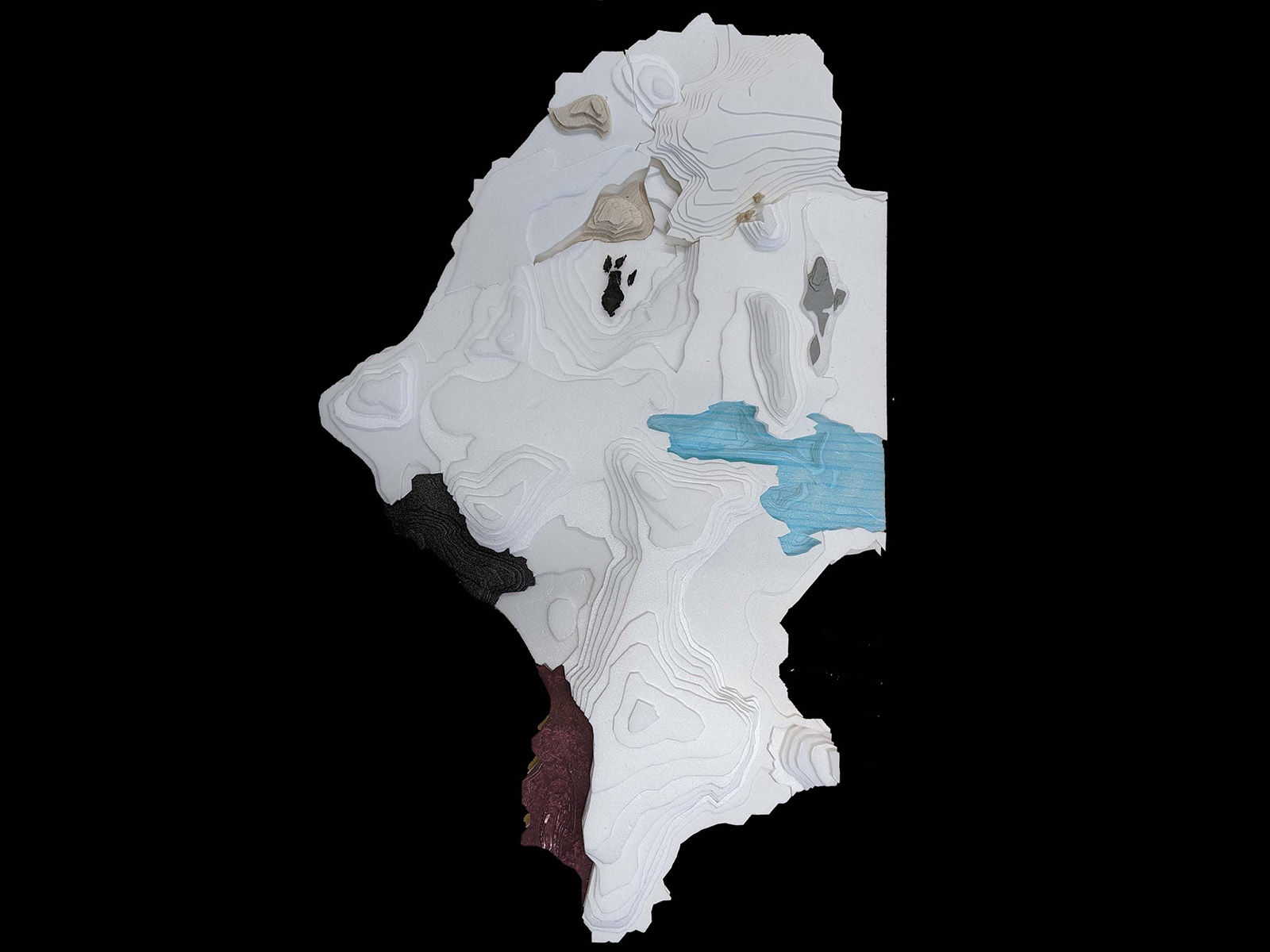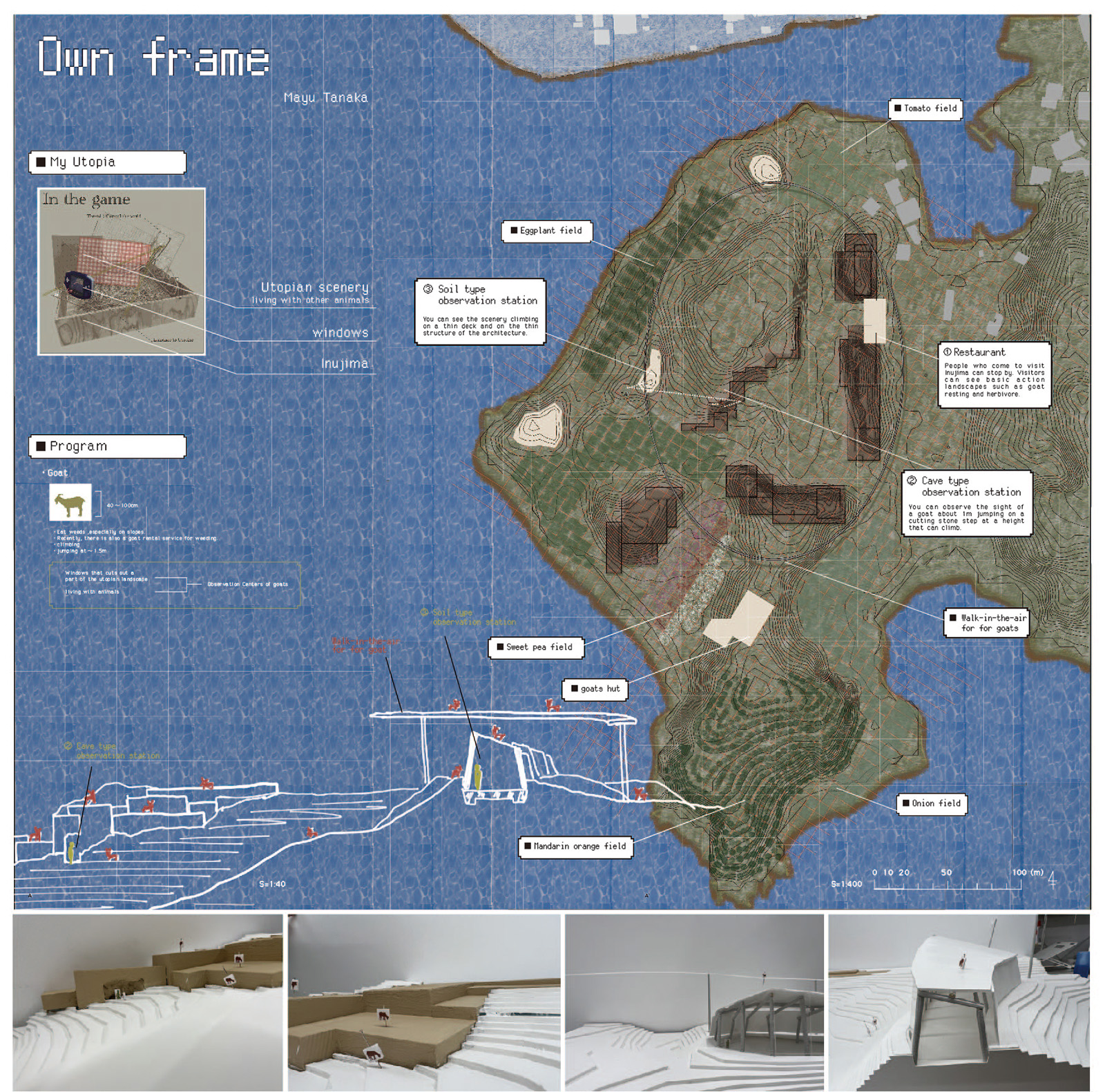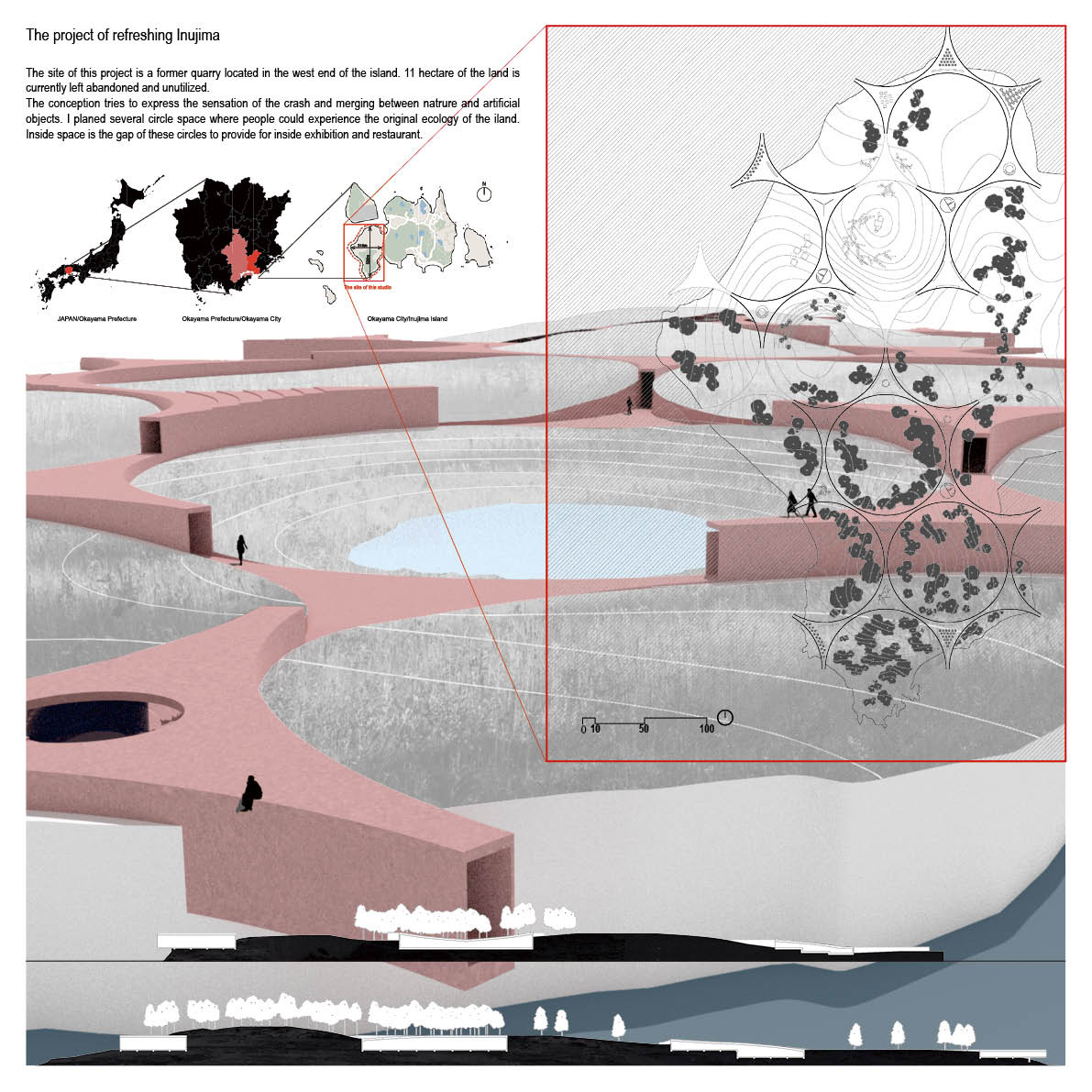Toward the New Aesthetics of Architecture
期間: 2021年秋学期(2021/9/〜2022/1)
敷地: 犬島
概要: We live in a world of excess. This excess is both physical and virtual. Our built environment is filled with countless objects. 6,000 tons of debris are flying around in low Earth orbit at 18,000 miles per hour. 3,400 pieces of microplastic are floating in one liter of water in Mariana Trench. More than 40 billion photos and videos have been posted on instagram, and a sum of 59 zettabytes of data was produced and consumed worldwide in the year 2020. This is nothing new to us. We were already witnessing the acceleration of excess in the 1990s when the Cold War was over and the Internet was rising, and architects have been seeking to come up with a new model with the employment of digital technologies. Stan Allen argued for “Fluid models of exchange, differential unities, and free-floating intensities (Allen 1995)”, Greg Lynn introduced a concept of folding and curvilinearity that “allows architecture to become involved in complexity through flexibility (Lynn 1993)”, and Patrik Schumacher believed that “The built environment needs to sort, distribute, and order a myriad of different communication scenarios (Schumacher 2013)”. The model could be described as an adaptive single system framework that embraces a heterogeneity of the excess, and this became a basis of today’s mainstream aesthetics of smooth continuity.
However, the level of excess in the world has reached a point where it is no longer valid to conceive any flexible single system frameworks for the over accelerated excess condition. Material excess has undermined the universal concept of nature. Information excess has led to the Post-truth situation. This shift in the political situation has undermined the belief in the existence of a single common basis for any different ideologies (European Union, or “It don’t matter if you’re black or white” by Michael Jackson) which the political agenda of the model of adaptive single system framework is based on.
How we can formulate a new model and aesthetics that directly address the excess without mediating it through single system frameworks is an underlying question of this studio.
詳細:スタジオ課題文
+2021/11/9 中間講評会
ゲスト:Mikiko TAKASAGO, Yushi SASADA
+2022/1/11 最終講評会
ゲスト:Tamao HASHIMOTO, Toshikatsu KIUCHI
+学生成果物
